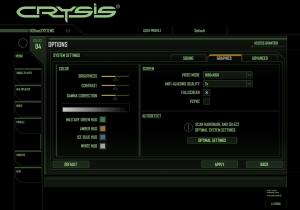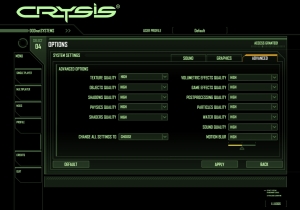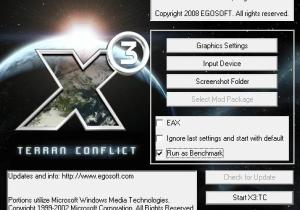Crysis
Publisher: Electronic ArtsWe patch Crysis to v1.21 and run it in DirectX 10 mode with High detail settings. We use 1,680 x 1,050 with no AA and no AF to give a reasonably real-world test without the risk that the graphics card will be a limiting factor to CPU performance.
We use the Habour test in the Crysis benchmark tool to playback a section of night combat. We repeat this test three times, or until a reliable set of results is achieved. The consistent results are then averaged to give the figures below.
This is the best way to test how a CPU affects game performance, as the game will be generating AI and physics and game rules for the CPU to perform.
Read our Performance Analysis
X3:Terran Conflict
Publisher: EgoSoftX3: Terran Conflict is the latest space-based trading and fighting game in the X3 series. It uses masses of polygons and geometry to create the complex ships and so is a very stressful test for a CPU.
Remember that it's the CPU that constructs the wire-frame models of game objects, before a GPU can apply texture and lighting.
To run the benchmark, first download the rolling demo and set the graphics options as below. Then remember to tick the 'Run as benchmark' box and hit go. We average the results of the four component tests to give a single minimum and average frame rate.
Read our Performance Analysis

MSI MPG Velox 100R Chassis Review
October 14 2021 | 15:04













Want to comment? Please log in.